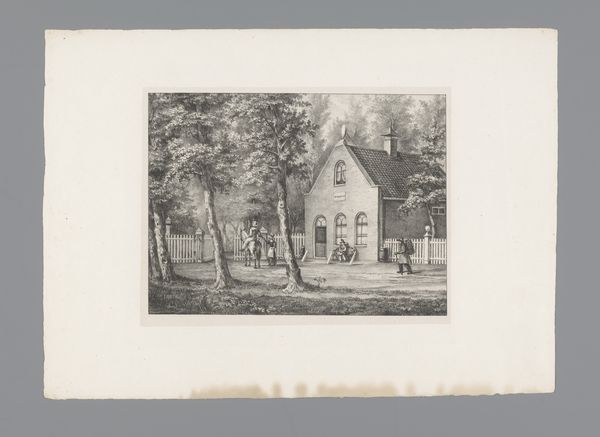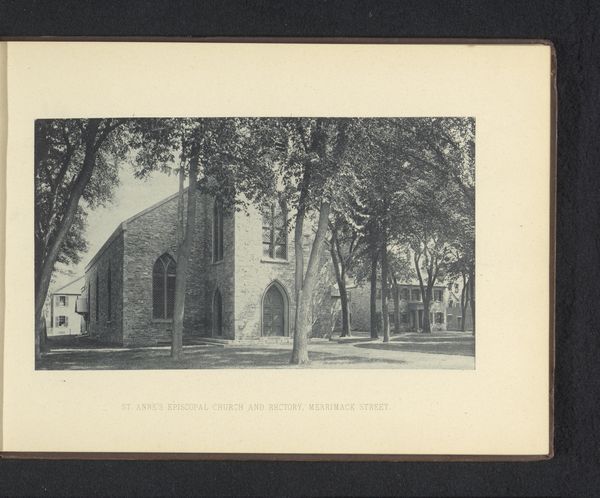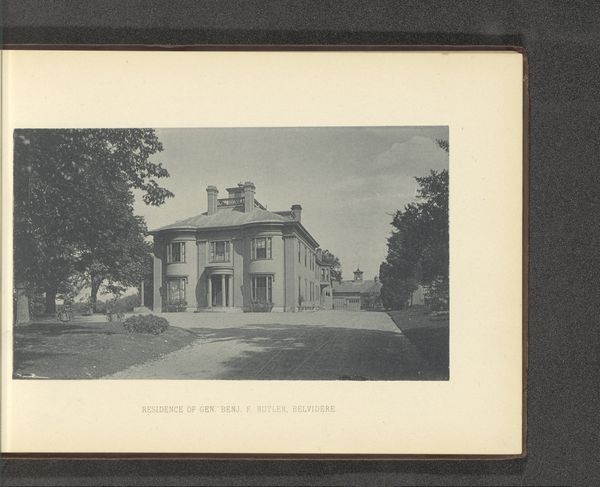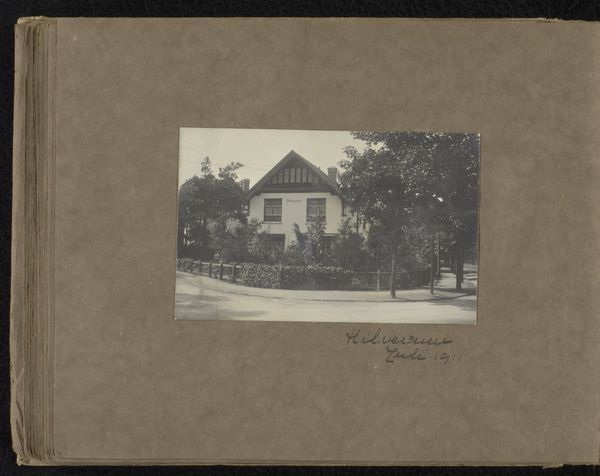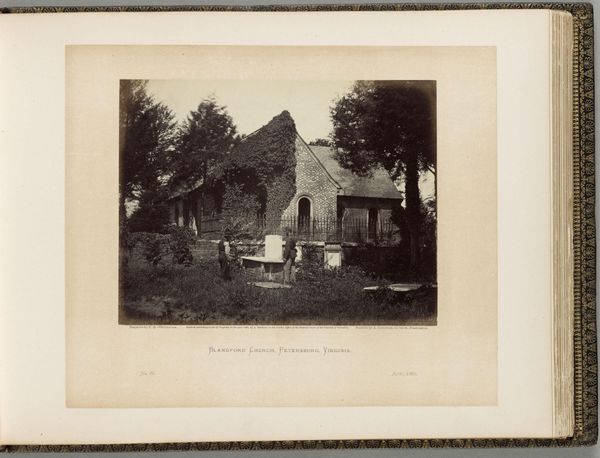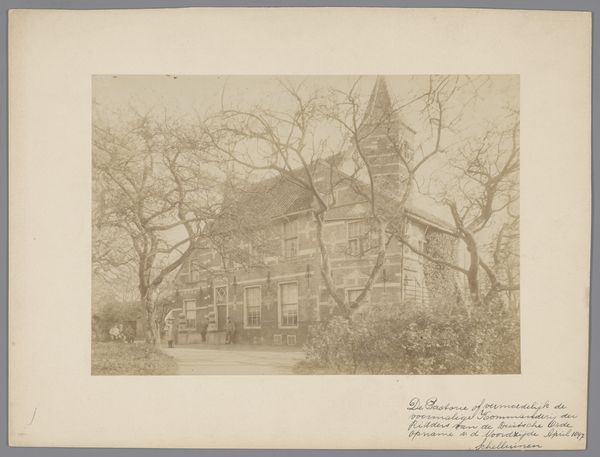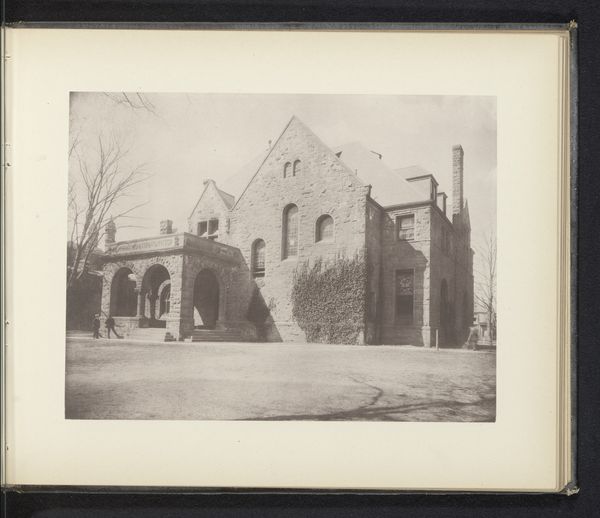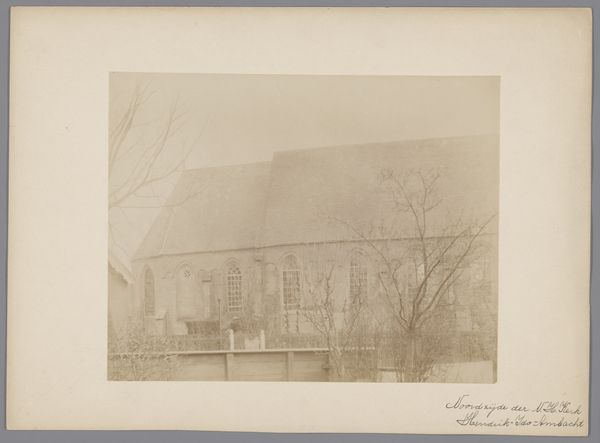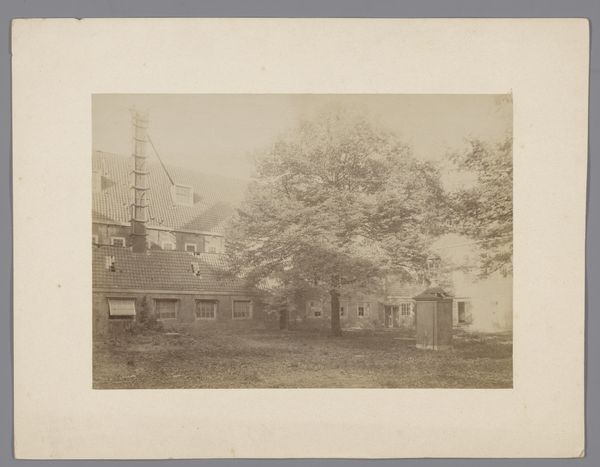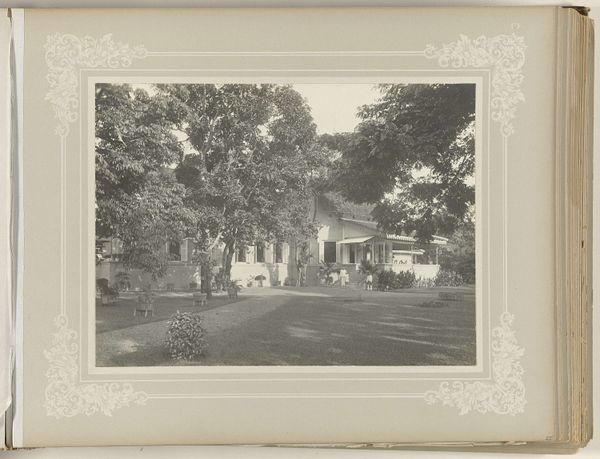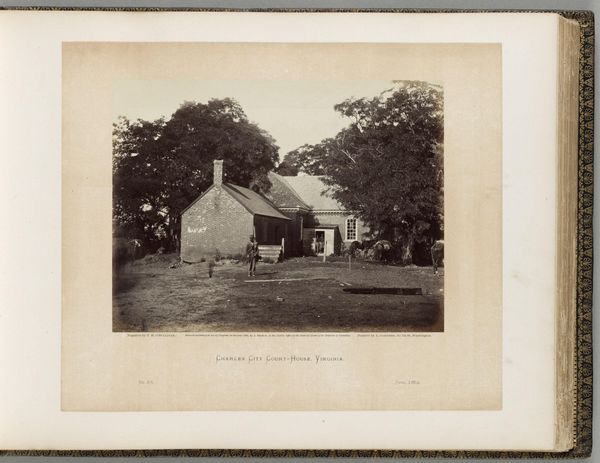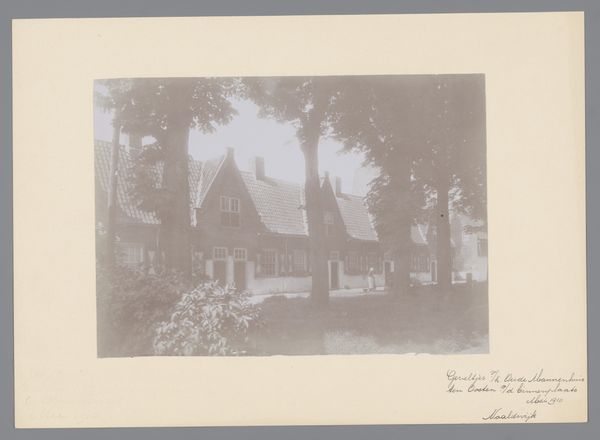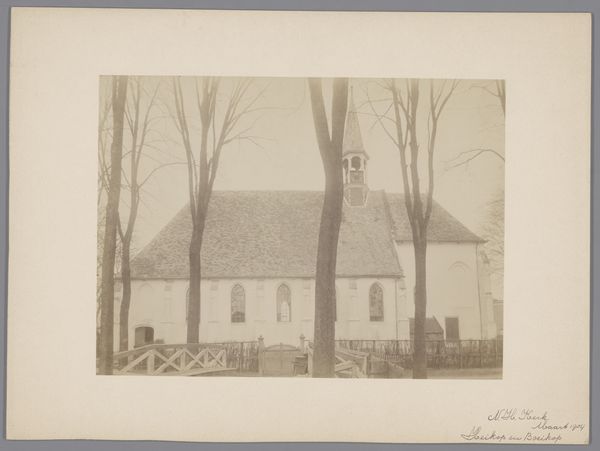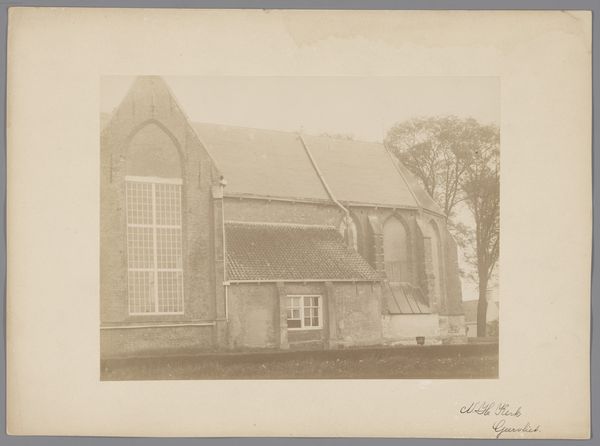
photography
#
pictorialism
#
landscape
#
photography
#
cityscape
Dimensions: height 107 mm, width 183 mm
Copyright: Rijks Museum: Open Domain
Curator: Here we have an early photograph, dating from before 1892, of the entrance to Lowell Cemetery. It presents a meticulously arranged landscape scene in monochrome tones. What are your initial thoughts on this image? Editor: It’s…somber, certainly. The light seems very soft, almost gauzy. Everything looks textured. I’m especially drawn to the texture of the stone and the dense growth of ivy on the archway. Curator: Yes, and note how this softness is a hallmark of Pictorialism, the style in which the image is rooted. Think about the social context—photography at this time was vying for artistic credibility against painting, and the ethereal effect creates a certain painterly feel, attempting to elevate it beyond mere documentation. Editor: Interesting. I wonder about the photographer’s labour here. Working with early photographic processes, setting up the shot, mixing the chemicals – this wasn’t a simple point-and-shoot affair. It’s a physical endeavor, almost a craft, with tangible material outcomes. The choices in lenses or the processing impact the final print we see, affecting how light and shadow interact. Curator: Absolutely. The photographer shapes the narrative. Images of cemeteries, particularly grand ones like this, speak volumes about societal attitudes towards death, class, and public space. The presence of these elaborate structures reflect the aspirations of the community to present a picture of respectability. Editor: Indeed. What intrigues me, as well, is how the stone itself comes from particular quarries, was extracted by laborers. And that little building--it's beautifully made, each stone carefully fitted, which probably indicates some civic investment. Every piece has a source and tells a history. Curator: Precisely. These landscape photographs were tools used by city planners, landscape architects, and civic boosters who wanted to convey particular ideas of Lowell and its environs to its residents and potential investors, bolstering their reputation. Editor: So the aesthetic quality really intertwines with its purpose then, revealing social status through material form. It makes you reconsider how much we really gather about a historical culture. Curator: Yes, and that is something to reflect on when viewing this photograph. It really makes you think how this artful style reflects the ambitions of the city's elite in the late 19th century. Editor: Exactly. It prompts an examination of materials, labour, and cultural expression woven together in a seemingly serene depiction of a cemetery entrance.
Comments
No comments
Be the first to comment and join the conversation on the ultimate creative platform.
